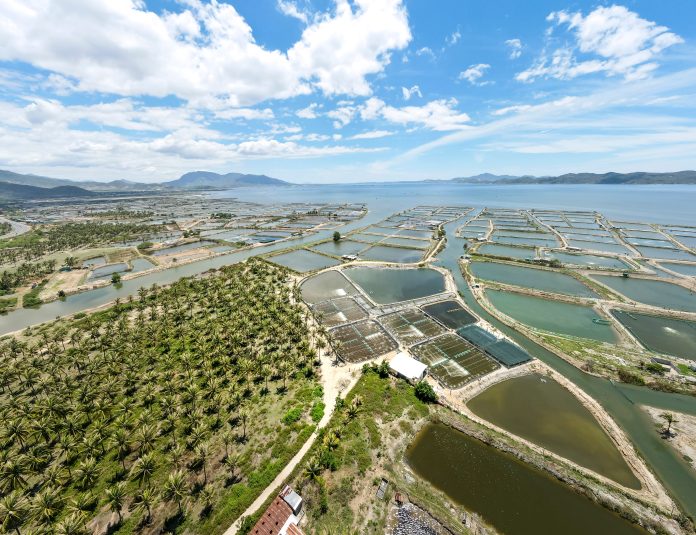In the world of fish businesses, shrimp farming is becoming increasingly popular. Shrimp is a crustacean that can be farmed for its meat, shells, and other products.
According to the Food and Agriculture Organization of the United Nations, shrimp farming is one of the most profitable aquaculture businesses in many parts of the world.
Did you ever imagine that you could become a shrimp farmer? With the proper knowledge and resources, shrimp farming can be rewarding. However, if you’re interested in learning how to start shrimp farming, you’ll need to learn the basics of setting up a farm and understanding the industry.
-
Research
You should learn about the different types of shrimp, the farming methods and processes, and the markets. Furthermore, you’ll need to understand the costs of running an operation, such as feed, equipment, and labor. Additionally, you’ll need to research the laws and regulations in your area and zoning restrictions. For example, you’ll need to know if there are limits on the size of your farm or if there are restrictions on the types of chemicals you can use. Besides, you’ll want to determine the most suitable location for your farm based on climate, access to water and electricity, and proximity to markets. However, it is essential to remember that environmental regulations are stringent, so you should be aware of all the rules and regulations that apply in your area.
-
Facilities
Shrimp farms require various facilities and equipment, including ponds, aerators, feeders, pumps, water filters, tanks, cages, nets, and tanks. Depending on the size of your farm, you may need to invest in more extensive equipment, such as boats and harvesters. Additionally, you’ll want to ensure that all facilities meet safety requirements and are licensed with the relevant authorities. Also, you’ll need to ensure that the water quality is suitable for shrimp farming.
-
Management
Shrimp farming requires careful management and attention throughout the entire process. You’ll need to regularly check on your shrimp, feed them correctly, monitor their growth, and adjust the environment as needed. Additionally, you’ll want to ensure that your farm is free of predators, pests, and diseases. You should also monitor water quality regularly and address any problems that arise. Despite all these challenges, shrimp farming can be a profitable business.
-
Marketing
Once you’ve established your farm, you’ll need to market your products. You can reach out to local wholesalers, retailers, and restaurants interested in purchasing shrimp. Additionally, you can participate in seafood trade shows and events to promote your product. Shrimp farming is profitable because there are many options for selling your product. Therefore, you can be a successful shrimp farmer with the proper knowledge and resources.
-
Financing and Business Acumen
Finally, you’ll need to secure the necessary financing for setting up a farm. You can apply for grants, loans, or other forms of financing. Additionally, you’ll need to have a keen understanding of business management and be able to handle complex financial transactions. Remember, running a successful shrimp farm involves more than just setting up the physical facilities. You’ll need to know about marketing, finance, and business management to succeed in this venture.
FAQs
Question 1: How much capital do I need to start shrimp farming?
How much capital you need to start a shrimp farm will depend on the size of your operation and the type of facilities you plan to build. Generally, you’ll need several thousand dollars for essential equipment and supplies such as tanks, aerators, feeders, pumps, cages, and nets. Additionally, you’ll need to factor in labor and marketing costs.
Question 2: How do I ensure water quality?
You should regularly check the water quality and adjust as needed. This includes testing for pH levels, dissolved oxygen levels, temperature, salinity, nitrates, phosphates, and other contaminants. Additionally, you should regularly monitor the water circulation, aeration, and filtration systems. Finally, you’ll need to take measures to eliminate predators and pests from your farm.
Question 3: How do I market my product?
You can reach out to local wholesalers, retailers, restaurants, and other seafood businesses to inquire about purchasing your product. Additionally, it would be best if you considered participating in seafood trade shows and events to promote your shrimp farm.
Question 4: How do I secure financing?
You can apply for grants, loans, or other forms of financing. Additionally, you may need to speak with an accountant or financial advisor to discuss the best options for your business.
Question 5: How difficult is shrimp farming?
Shrimp farming can be a challenging endeavor. There are many factors to consider, and you’ll need to know about business management, marketing, and finance. Additionally, you’ll need to regularly monitor the water quality, feed your shrimp correctly, and adjust the environment as needed. Despite these challenges, shrimp farming can be advantageous with the proper knowledge and resources.
Question 6: How to start shrimp farming without much capital?
You can start shrimp farming without much capital by utilizing existing resources such as tanks, aerators, feeders, pumps, cages, and nets. Additionally, it would be best if you researched grants or another financing available to help with the initial setup costs. Finally, you may need to look for ways to save money, such as using recycled materials or purchasing used equipment. You can launch a shrimp farm with limited capital with the proper knowledge and resources.
Summary
Now that you know how to start shrimp farming, you can begin setting up your farm. First, you should research the necessary equipment and supplies, secure financing, and understand basic business principles such as marketing and finance. Additionally, it would be best if you were prepared for the challenges of running a successful operation, including regularly checking water quality and managing pests. Then, with the proper knowledge and resources, you can start shrimp farming and see success.
Good luck!



















